IN the 1940s, when Joe Nati’s family began flower farming in the lush market garden hinterland of north-west Sydney, business was much simpler. All the flowers were grown locally – merely a few suburbs away from market or at most an hour or two away on the city outskirts.
But today many of the flowers we buy for personal milestones, Mother’s Days and Valentine’s Days, are multinational jetsetters, crisscrossing the globe from faraway places such as Kenya, Malaysia and Colombia. As glamorous as that sounds, this bounty of beauty could be a threat to our own industry, with imported cut flowers posing a biosecurity risk, not only to Australian flower growers, but to other horticulture industries, too.
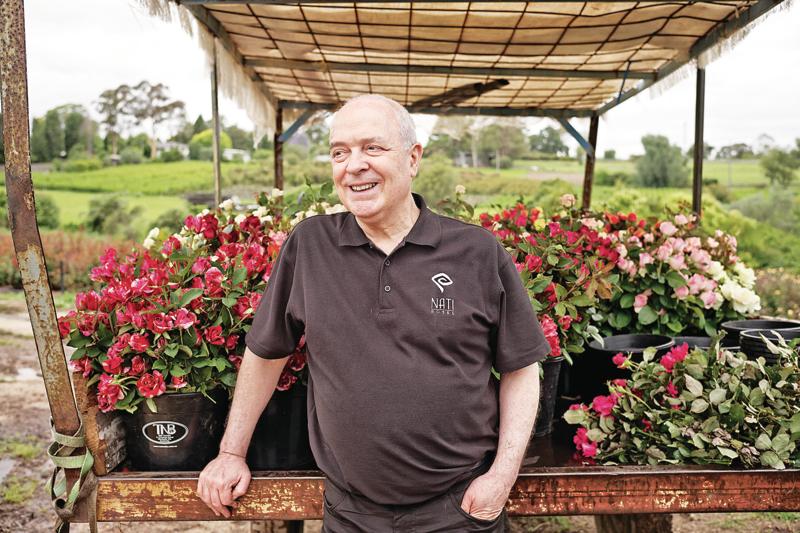 Joe Nati at Nati Roses farm in Middle Dural.
Joe Nati at Nati Roses farm in Middle Dural.
Flower growers in NSW are concerned by the pest and disease threat from cheap imports, with a high level of infested product making it to our borders – and beyond.
The
Department of Agriculture and Water Resources (DAWR) reports that in the three months to May 2017, there were 2,100 consignments of fresh-cut flowers and foliage imported into Australia. About 50% of these were fumigated at the border due to the presence of actionable pests, and included several detections of leaf-miner, a national-priority pest.
RELATED ARTICLES ON BIOSECURITY:
-
What’s bugging our biosecurity experts?
-
Industrious beekeepers nurture thriving business
-
Oyster theft no small issue for farmers
With imports of cut flowers and foliage to Australia more than tripling from 2,271 in 2007 to 7,627 in 2017, the DAWR says interceptions of pests have increased accordingly. These worrying statistics, coupled with the long-held concerns of local farmers, prompted tighter import regulations last year.
Stronger biosecurity measures needed
But flower grower and NSW Farmers’ board member Salvatore ‘Sal’ Russo, who with the NSW Flower Growers Group has spent much of the past decade campaigning federal governments for a stronger biosecurity model, says more needs to be done.
.jpg) Sal Russo at the Sydney Flower Market. He has seen a major expansion of imported cut flowers in the past two decades.
Sal Russo at the Sydney Flower Market. He has seen a major expansion of imported cut flowers in the past two decades.
His family has been growing flowers since the early 1960s, with the business now based at Arcadia in Greater Sydney and Spring Hill in the Central Tablelands. Sal sells all his blooms through the
Sydney Flower Market at Flemington. Up to the late 1980s, cut flowers were almost exclusively produced in Australia.
“Then supermarkets started selling flowers, and the supplier was buying local product and supplementing it with imported product,” says Sal. “In the mid-1990s, they shifted from imported product being a supplement to being a primary source.
“So we saw an exponential increase in the volume of flowers imported and the biosecurity system could not cope with it. Greater access was given to importers of flowers who have no ecological responsibility to the industry. All they are worried about is the bottom line.”
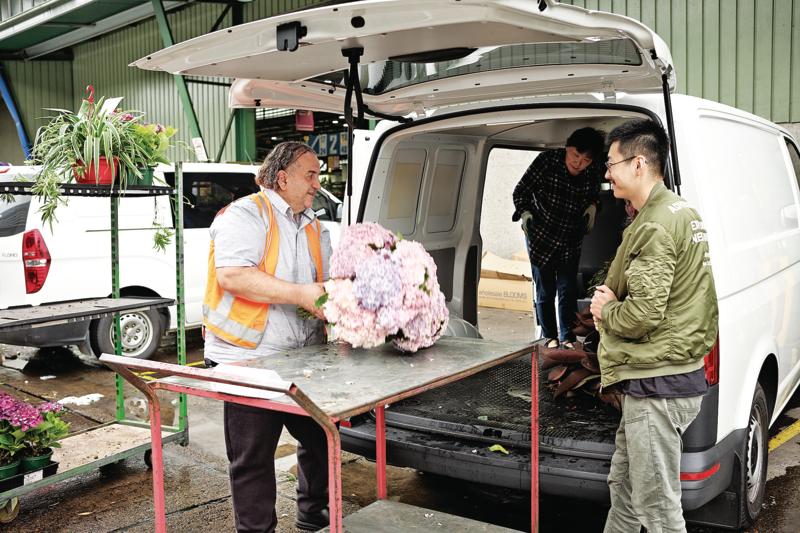 Sal Russo delivers his hydrangeas to customer.
Sal Russo delivers his hydrangeas to customer.
According to Sal, biosecurity controls have been under pressure ever since, with the introduction of western flower thrips and other pests into Australia, costing the industry an estimated $170 million in additional management and pesticide use.
Flower import numbers underestimated
The DAWR estimates that 10% of cut flowers and foliage sold in Australia are imported. Those in the industry, says Sal, believe that figure is closer to 30%. The flowers are imported from countries such as Kenya, Colombia, Ecuador, and Vietnam.
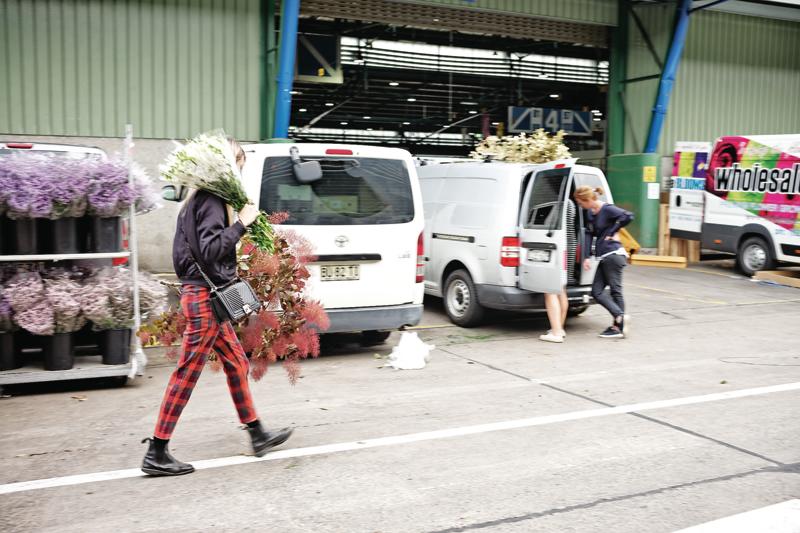 A Sydney florist carries flowers to her van at the Sydney Flower Market.
A Sydney florist carries flowers to her van at the Sydney Flower Market.
“The problem is the importers are obsessed with the profitability, and for them to be ecologically responsible would mean the cost of imported flowers would go up 30%,” he says. “We are not dealing with the source, we are dealing with the result – we are at the wrong end of the stick.
“We are faced with this constant dilemma, and what a lot of the importers will say is that biosecurity controls are just another form of tariff, and to that argument I say go and look at the devastation that imported diseases cause our local industries and then tell me it is a tariff.”
Imported flowers increase pest risk
In 2017, the DAWR reviewed the import history of fresh-cut flowers and foliage and identified a high number of pest infestations. It also undertook a pest risk analysis of thrips and orthotospoviruses on fresh fruit, vegetable, cut-flower and foliage imports.
The DAWR found 241 species of pests from three groups – mites, aphids and thrips – were present in imported flower shipments, and 23% of imported cut flowers and foliage were intercepted with pests at the border.
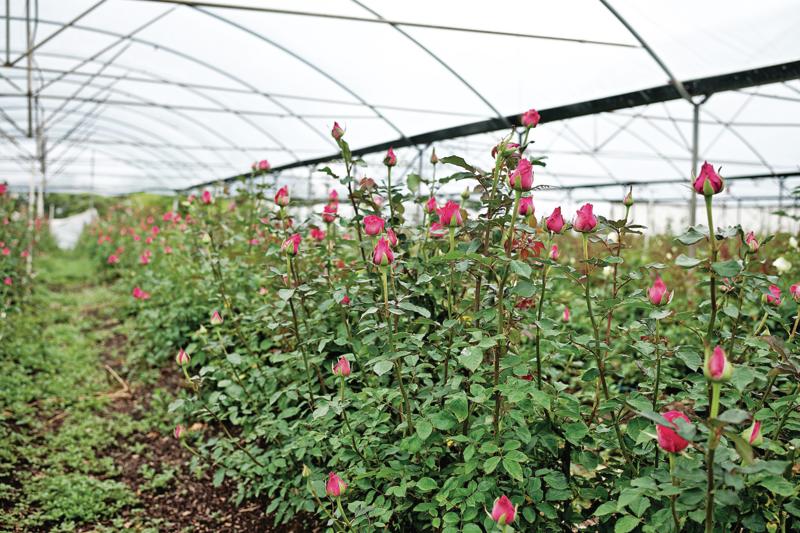 Roses growing at Nati Roses farm in Middle Dural.
Roses growing at Nati Roses farm in Middle Dural.
In the past, consignments of cut flowers were inspected for pests and treated with methyl bromide fumigation on arrival in Australia. Says a DAWR spokesperson: “Previous import conditions were not adequate to achieve Australia’s appropriate level of protection, because of the large numbers of interception events of quarantine arthropods on imported cut flowers and foliage.”
New regulations for floral imports
New regulations, introduced in March 2018, require the exporting country’s National Plant Protection Organisation to certify the flowers are pest-free and to fumigate them before they are shipped to Australia. A draft consultation report of the new regulations says, “The enhanced import conditions for fresh-cut flowers and foliage effectively manage the associated biosecurity risks”.
However, speaking at the end of 2018, a DAWR spokesperson said, “Overall, there has only been a small improvement in non-compliance since implementation of the new measures. We are aiming to reduce the overall non-compliance due to the presence of live quarantine pests for cut-flower and foliage pathways to a maximum of 10%.
“Where there are ongoing non-compliance rates above 10% that cannot be resolved by the end of 2018, the department may consider suspending the use of specific measures from certain countries as a mechanism to address high rates of non-compliance.”
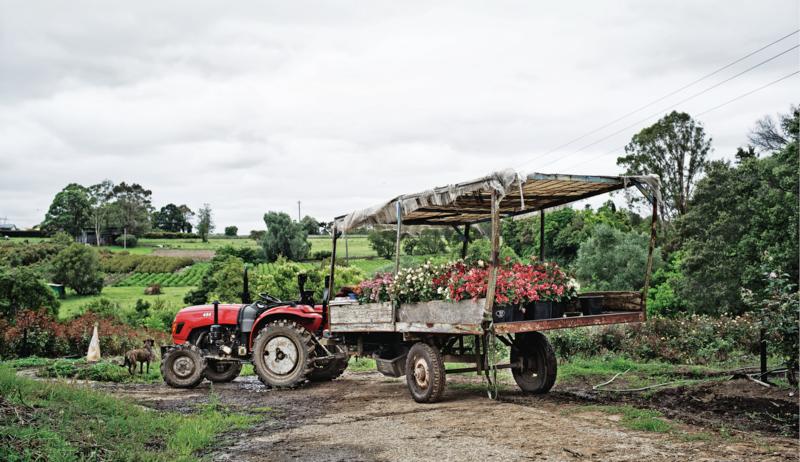 Harvesting blooms at Nati Roses.
Harvesting blooms at Nati Roses.
Calling for zero-tolerance import policy
Sal Russo says allowing flowers entering Australia to have a 10% infestation rate is “bizarre”, and importers should be licensed and insured. “The nursery industry, when it imports plants into Australia, has a zero-tolerance policy. If there are any pests on any stock, it is destroyed – so why the difference between flowers and plants?” he says.
RELATED ARTICLES ON PESTS AND DISEASE:
-
Farmers want a bigger say in weed management
-
Kangaroos: Pest or marketing opportunity?
-
Crop to courtroom: Farmers fight shattercane
“We need to look at a comprehensive biosecurity policy, which involves the licensing and mandatory insuring of importers of flowers, foliage, seeds, animals and food product. The most important conduit for pests and diseases has no responsibility in the biosecurity armoury that we are trying to put together.
“I don’t have a problem with imported flowers in the sense we need them to supplement local flowers when we don’t have stuff, but not as a primary source and not dirty product.”
 A customer at Joe Nati’s stall chooses Double Delights.
A customer at Joe Nati’s stall chooses Double Delights.
Rose grower Joe Nati, whose family operation is based in Middle Dural about 18km from its origins in 1944 in West Ryde in Sydney (a suburb that has long since fallen victim to urban drift) also doesn’t have a problem with the importation of flowers and imports product himself to supplement supply.
In the 1980s, the family began importing product when local roses were out of season. “In those days, there were no growers in Kenya, China or India, so flowers that came over weren’t cheap, but they were a means to an end,” Joe says. “The market was getting more savvy, so we needed roses 12 months of the year.
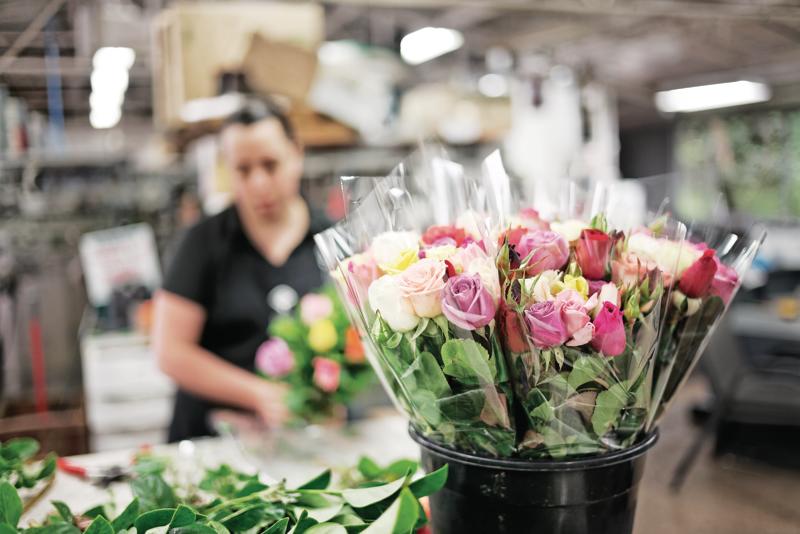 Florist Julie Purvis prepares flowers for sale in the Nati Roses farm shop.
Florist Julie Purvis prepares flowers for sale in the Nati Roses farm shop.
“Once other countries came into production, we started to see proliferation of cheap imports, and the price go from 70c a stem to 30c a stem.
“It went from growers and wholesalers importing flowers to supplement customers, and it became a free- for-all. Roses went from being an exclusive product to something considered a normal item in the market.
“And it has just dropped the price of the local product dramatically to the point where unfortunately a lot of local growers have left the industry because they can’t make it pay.”
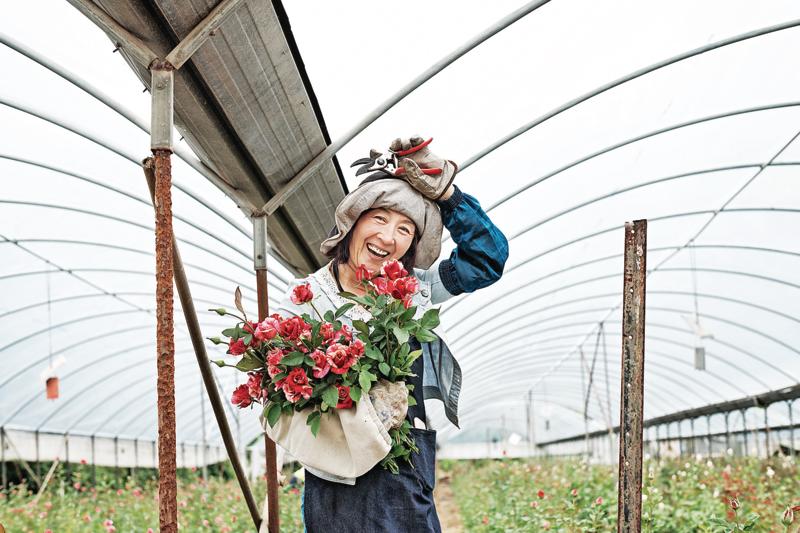 Flower picker Tina Jirong at the Nati Roses farm in Middle Dural.
Flower picker Tina Jirong at the Nati Roses farm in Middle Dural.
Joe says zero tolerance of pests and disease would be a better target, and a crackdown is needed for exporters and importers not doing the right thing.
“People haven’t been following the rules. If people followed the rules, this [pest introduction] wouldn’t happen,” he says. “The problem for us growers is we are really helpless, it is in the hands of the government to make sure the rules are met and followed.”